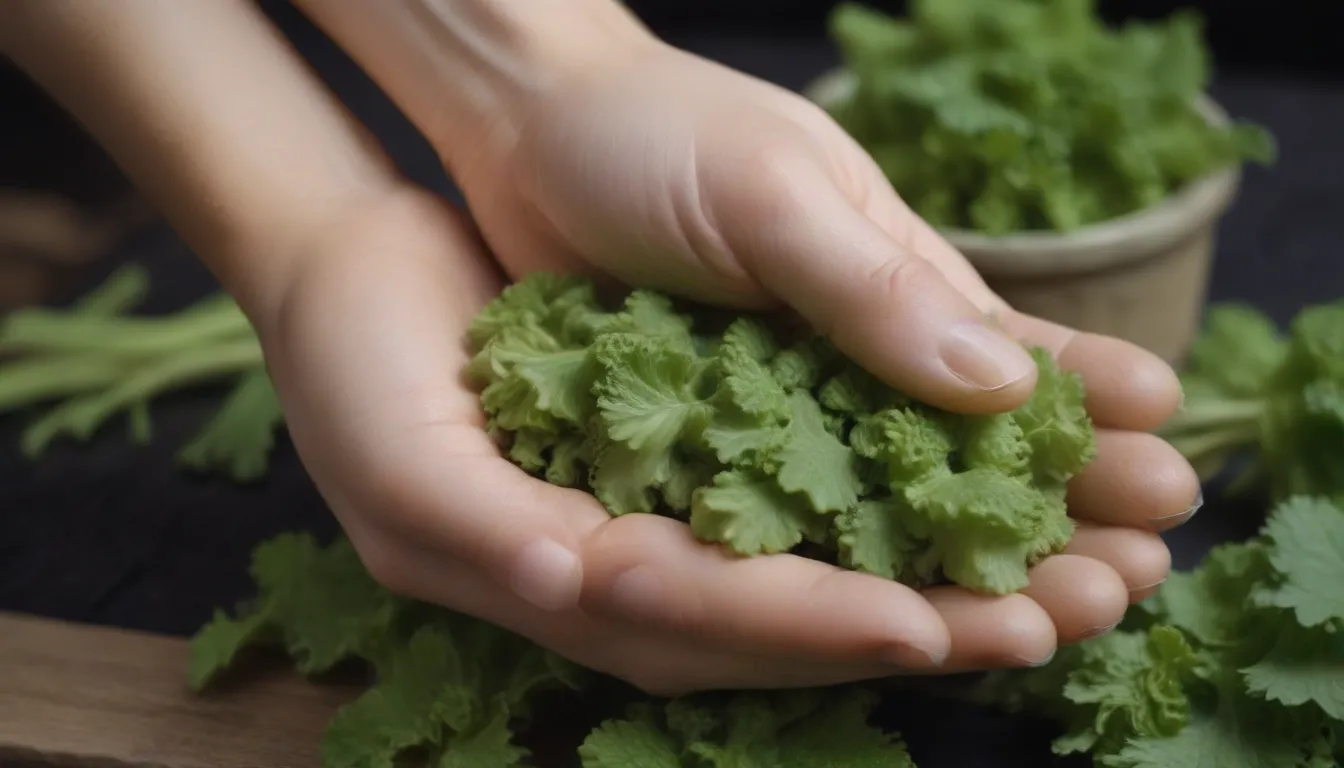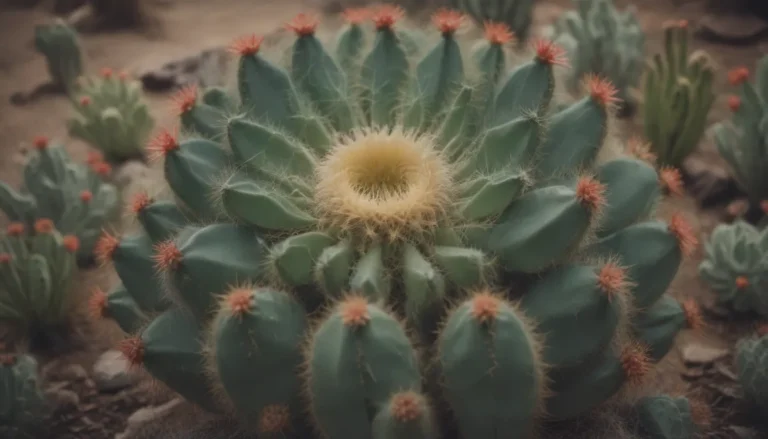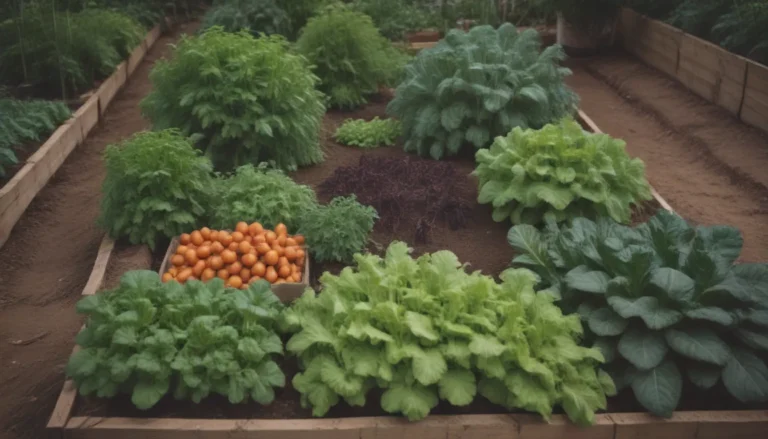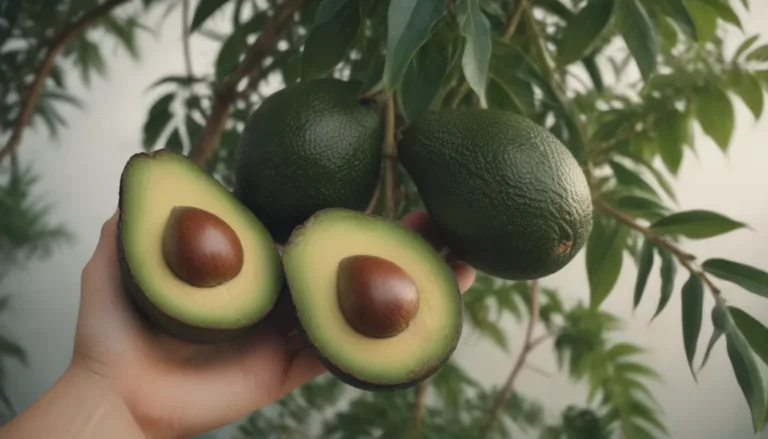The Ultimate Guide to Growing Real Wasabi at Home

Are you a fan of the spicy kick of wasabi that accompanies your favorite sushi rolls? Have you ever wondered if you could grow your own wasabi plant at home to elevate your culinary skills to the next level? Well, you’re in luck! In this comprehensive guide, we’ll delve into everything you need to know about growing real wasabi in your backyard. From planting to harvesting, we’ve got you covered with valuable tips and tricks to ensure your wasabi plants thrive and provide you with an endless supply of this zesty condiment. So, grab your gardening gloves and let’s get started on this flavorful journey!
Why Grow Your Own Wasabi?
Before we dive into the nitty-gritty details of growing wasabi, let’s explore why cultivating your own plants can be a rewarding and fulfilling experience for any aspiring home gardener. Here are a few reasons why growing real wasabi at home is a fantastic idea:
- Authenticity: Commercial wasabi served in restaurants often contains fillers like mustard and European horseradish. By growing your own plants, you can ensure that you’re getting 100% authentic wasabi flavor.
- Freshness: There’s nothing quite like the taste of freshly harvested produce. By growing your own wasabi, you can enjoy the unique flavor and heat of this Japanese delicacy at its peak.
- Sustainability: By growing your own herbs and spices at home, you reduce your reliance on store-bought products and minimize your carbon footprint. Plus, it’s a great way to connect with nature and appreciate the joys of gardening.
Now that you’re inspired to embark on your wasabi-growing journey, let’s delve into the details of planting and nurturing these finicky yet rewarding plants.
Can You Grow Real Wasabi at Home?
Yes, you can definitely grow real wasabi at home, but there are a few things to keep in mind to ensure the success of your plants. Here are some key points to consider:
- Plant Starts vs. Seeds: While it’s possible to grow wasabi from seeds, it’s generally easier and more reliable to start with plant starts. Seeds labeled as Wasabia japonica may actually be for related brassica plants like mustard greens. To avoid any confusion, opt for reputable sources when sourcing your plant starts.
- Specific Growing Conditions: Wasabi is a finicky plant that thrives in shady conditions with moist but not waterlogged soil. It prefers temperatures between 45°F and 75°F, making greenhouse cultivation a popular choice for serious growers.
By understanding these nuances and selecting the right starting point for your wasabi plants, you can set yourself up for a successful growing season.
How to Plant Wasabi
Planting wasabi requires careful attention to detail, as these plants have particular needs that must be met for optimal growth. Here’s a step-by-step guide to planting your own wasabi:
- Selecting a Planting Location: Choose a shady spot in your garden with well-drained, slightly acidic to neutral soil. If your soil pH is off, make sure to adjust it accordingly before planting.
- Using Containers: If your garden doesn’t meet the ideal conditions for growing wasabi, consider planting them in containers that can be easily moved to maintain the perfect environment.
- Preparing the Soil: Mix rich compost into the soil to provide essential nutrients for your plants. Ensure that the soil is moist but not waterlogged to prevent root rot.
- Planting the Nursery Starts: Plant your well-advanced potted nursery starts at least 1 foot tall, ensuring that the rhizome is partially exposed above the soil.
By following these planting guidelines and providing the right conditions for your wasabi plants, you’ll be on your way to a bountiful harvest in no time.
Wasabi Care Tips
Once your wasabi plants are in the ground or containers, it’s essential to provide them with the care they need to thrive. Here are some key care tips to keep your plants healthy and productive:
- Light: Wasabi plants prefer shade and can be protected from direct sunlight using shade cloth or movable screens.
- Soil: Ensure that the soil remains consistently moist and well-drained, with a slightly acidic to neutral pH. Use a soil mix that holds moisture for container-grown plants.
- Watering: Water your wasabi plants regularly, taking care not to overwater as they are sensitive to waterlogged conditions.
- Temperature and Humidity: Maintain a constant temperature range of 45°F to 75°F for optimal growth. Avoid extreme temperatures that can stress the plants and lead to wilting.
By providing the right conditions and attentive care, you can ensure that your wasabi plants thrive and produce flavorful rhizomes for your culinary creations.
Harvesting and Enjoying Your Wasabi
After months of care and attention, your wasabi plants will be ready for harvest. Here’s how you can enjoy the fruits of your labor and savor the unique flavor of fresh wasabi:
- Harvesting: Most wasabi plants can be harvested after the second year, with mature stalks ready for pulling within 15 months to two years. Enjoy the leaves in salads, soups, or stir-fries while waiting for the rhizomes to mature.
- Preserving the Harvest: If you have an abundance of leaves, consider blanching and freezing them for future use. You can also make a pesto-like sauce with the leaves and freeze it for later consumption.
- Culinary Uses: The stems of the wasabi plant are crunchy and delicious when added to stir-fries or salads. Freshly harvested wasabi adds a zesty kick to your favorite dishes, elevating the flavor profile with its unique heat.
By incorporating freshly harvested wasabi into your culinary repertoire, you can impress your family and friends with homemade sushi accompaniments and flavorful dishes that showcase the distinctive taste of this Japanese delicacy.
Common Pests and Plant Diseases
While growing wasabi can be a rewarding experience, it’s important to be aware of potential pests and diseases that may affect your plants. Here are some common issues to watch out for and how to address them:
- Pests: Wasabi plants can attract pests like cabbage worms and aphids. Remove slugs by hand and deter aphids with a gentle stream of water or a soft cloth. Maintain cool temperatures and shady conditions to discourage pest infestations.
- Diseases: If fungal diseases are present, consider using copper spray or baking soda spray to combat the issue. Avoid using insecticidal soaps, as they may harm your wasabi plants.
By staying vigilant and addressing pest and disease issues promptly, you can protect your wasabi plants and ensure a healthy growing season.
Propagating Wasabi for Future Harvests
If you’re interested in propagating your wasabi plants for future harvests, there are a few methods you can explore. Here’s how you can propagate wasabi and expand your garden with new plants:
- Offshoots: Snip off the offshoots that appear at the base of mature plants and plant them in a sand and compost mixture. In a couple of months, the offshoots should develop roots and can be transplanted into the garden or containers.
- Seeds: While wasabi seeds are challenging to germinate, you can try your hand at growing plants from seeds sourced from reputable suppliers. However, starting with plant starts is generally more reliable for novice growers.
By experimenting with propagation techniques and expanding your wasabi garden, you can enjoy a continuous supply of fresh rhizomes and leaves for culinary creations.
Exploring Wasabi Varieties
Several popular cultivars of wasabi offer unique flavors and characteristics for home gardeners to explore. Here are some varieties you may encounter:
- ‘Daruma’ – Known for its compact growth habit and pungent flavor.
- ‘Fuji Daruma’ – A hybrid variety with excellent heat and flavor.
- ‘Green Thumb’ – Prized for its vigorous growth and abundant rhizomes.
- ‘Sanpoo’ – Offers a milder heat profile and versatile culinary uses.
- ‘Mazuma’ – Known for its bold flavor and striking appearance.
By experimenting with different varieties of wasabi, you can discover nuanced flavors and textures that enhance your culinary creations and elevate your dining experiences.
The Culinary Versatility of Wasabi
Beyond the traditional use of wasabi as a sushi condiment, this versatile plant offers a range of culinary possibilities. Here are some creative ways to incorporate various parts of the wasabi plant into your dishes:
- Rhizome: The thick stalk of the mature plant is ground up to make wasabi sauce or paste, adding a fiery kick to sushi, sashimi, and other dishes.
- Stems: The stems of the wasabi plant are crunchy and flavorful, making them ideal for stir-fries, salads, and garnishes.
- Leaves: The leaves can be used in salads, soups, smoothies, and pesto-like sauces, adding a fresh and peppery flavor to your culinary creations.
By exploring the culinary versatility of the entire wasabi plant, you can enhance your cooking skills and enjoy the unique flavors and textures this Japanese delicacy has to offer.
Conclusion
In conclusion, growing real wasabi at home is a rewarding and fulfilling endeavor that allows you to experience the authentic taste and heat of this Japanese delicacy. By following the planting, care, and harvesting guidelines outlined in this comprehensive guide, you can cultivate thriving wasabi plants in your garden or containers and enjoy a bountiful harvest of fresh rhizomes and leaves. Whether you’re a seasoned gardener or a novice enthusiast, growing real wasabi offers a unique and flavorful experience that will elevate your culinary creations and delight your taste buds. So, roll up your sleeves, get your hands dirty, and embark on this flavorful journey to grow your own wasabi at home. Happy gardening and happy cooking!





